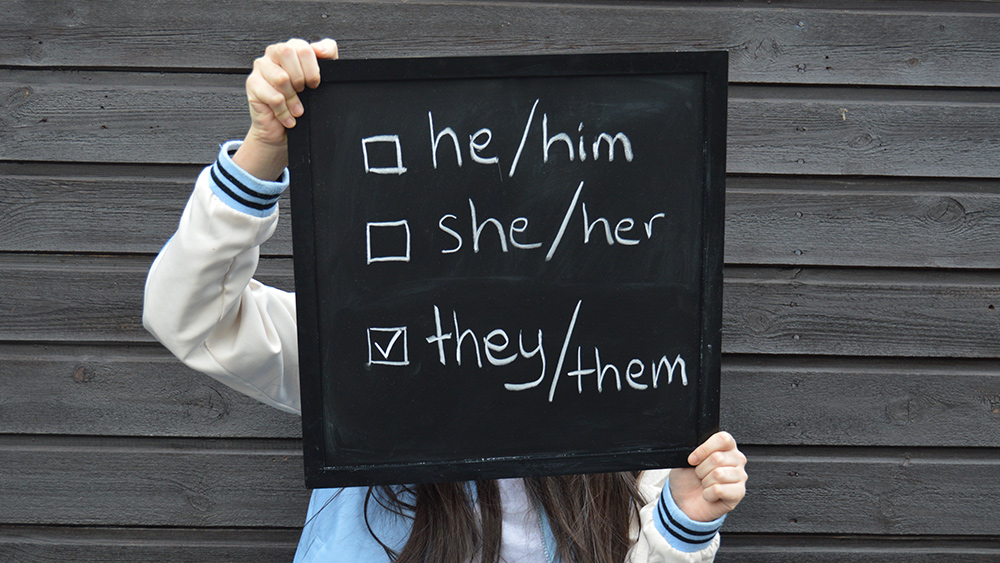Study: Number of chronically absent students has increased by 6.5 MILLION after COVID-19 pandemic
08/22/2023 / By Zoey Sky

At the height of the Wuhan coronavirus (COVID-19) pandemic, people were told to stay indoors to stop the spread of infections.
However, a study conducted by Stanford University researchers on how COVID-19 lockdowns affected classroom attendance suggests that the lockdowns may have done more harm than good, especially among students.
According to the study, the number of chronically absent students has skyrocketed by 6.5 million from before the pandemic to the 2021-22 school year.
More than one-quarter of students missed at least 10 percent of the 2021-22 school year, making them chronically absent.
Before the COVID-19 pandemic, only 15 percent of students missed that much time in school.
The Stanford study showed that in the worst-affected states of Alaska and New Mexico, almost 50 percent of students are missing a tenth of their classes. The study also revealed that poor and minority kids are the worst affected by chronic absenteeism.
The study, which was headed by Thomas Dee, an education professor, sparks growing fears of a national education crisis. After all, shuttered classrooms during the pandemic have already seen a decrease in literacy and numeracy rates.
Hedy Chang, executive director of Attendance Works, a nonprofit focused on absenteeism, said that the long-term consequences of missing so much school are “devastating.”
Chang added that the COVID-19 pandemic made things worse for more students.
Data from 40 states and Washington D.C. offers the most comprehensive accounting of absenteeism nationwide. According to the study findings, absent students miss out on classes and on the other important things schools provide for young students, such as counseling, socialization and meals.
The students who are chronically absent, defined as “missing 18 or more days a year” in most places, are at higher risk of not learning to read and eventually dropping out of school.
Researchers found that absences worsened in every state with available data. In seven states, the rate of chronically absent students has doubled for the 2021-22 school year, compared to pre-pandemic 2018-19 school year.
Kids stay home for different reasons, such as:
- Anxiety
- Depression
- Bullying
- Generally feeling unwelcome at school
- Housing instability
- Illness
- Money
- School staffing shortages
- Transport issues
The effects of online learning also linger. After spending many months at home during the pandemic, many parents and students no longer see the point of regular attendance.
Schools feel different post-COVID-19
According to experts on chronic absenteeism, the post-COVID era seems different.
Todd Langager, who is working to help San Diego County schools deal with absenteeism, advised that some of the factors that prevent students from getting to school are consistent, such as economic distress or illness.
However, Langager added that “something has changed.” For example, some students “who already felt unseen, or without a caring adult at school, feel further disconnected.” (Related: pandemic shutdowns to blame for historic drop in mathematics and reading proficiency scores among American children.)
Data showed that Alaska led in absenteeism, with a staggering 48.6 percent of students missing significant amounts of school. Alaska Native students’ rate was much higher at 56.5 percent.
Heather Powell, a teacher and Alaska Native, explained that those students often deal with poverty and a lack of mental health services, along with a school calendar that isn’t aligned with traditional hunting and fishing activities that are important to their way of life.
Many Alaska Native students are raised by their grandparents who remember the government forcing Native children into boarding schools.
Powell noted that Alaska Native families don’t value education compared to those in other states because it isn’t something that has ever valued them as people.
In New York, Marisa Kosek explained that her son James lost the relationships he fostered at his school. This eventually resulted in her son losing his desire to attend class altogether.
James is 12 years old and has autism. First, he struggled with online learning, then with a hybrid model.
Other students had chronic absences because of medical and staffing issues.
Juan Ballina is a 17-year-old with epilepsy. He requires a trained staff member nearby to administer medication in case of a seizure.
However, post-COVID-19, many school nurses retired while some looked for better pay in hospitals, resulting in a nationwide shortage.
In 2022, Ballina’s nurse was on medical leave and his school couldn’t find a substitute. This resulted in Ballina missing more than 90 days at his school.
His mother, Carmen Ballina, explained that the effects of his absence persist. Juan used to be an avid reader, but he isn’t reading as much these days. Carmen thinks Juan has lost much of his motivation.
Educators and experts have cited another unfortunate lasting effect of the COVID-19 pandemic: Some parents and students have been conditioned to stay home even at the most minor signs of sickness.
Before the pandemic, Renee Slater’s daughter rarely missed school. But last school year, her daughter, a former straight-A middle schooler, said she had to stay home 20 days because she “just didn’t feel well.”
Slater, who teaches in the rural California district her daughter attends, said that as children get older, it’s much harder to physically pick them up, get them into the car and drive them to school.
She noted that her daughter doesn’t dislike school, but she’s missed many days because of “a change in mindset.”
Learn more about the lasting effects of COVID-19 pandemic lockdowns on children and adults at BadMedicine.news.
Watch the video below for more information on how pandemic lockdowns have killed more people than COVID-19 itself.
This video is from the RealNewsChannel.com channel on Brighteon.com.
More related stories:
U.S. government planned out, executed covid “pandemic”: PROOF.
Sources include:
Submit a correction >>
Tagged Under:
campus insanity, children's health, chronic absenteeism, collapse, covid-19, education system, literacy, medical fascism, Medical Tyranny, mental health, mind, pandemic, public education, research, school, Students
This article may contain statements that reflect the opinion of the author
RECENT NEWS & ARTICLES
COPYRIGHT © 2018 PUBLICEDUCATION.NEWS
All content posted on this site is protected under Free Speech. PublicEducation.news is not responsible for content written by contributing authors. The information on this site is provided for educational and entertainment purposes only. It is not intended as a substitute for professional advice of any kind. PublicEducation.news assumes no responsibility for the use or misuse of this material. All trademarks, registered trademarks and service marks mentioned on this site are the property of their respective owners.




















